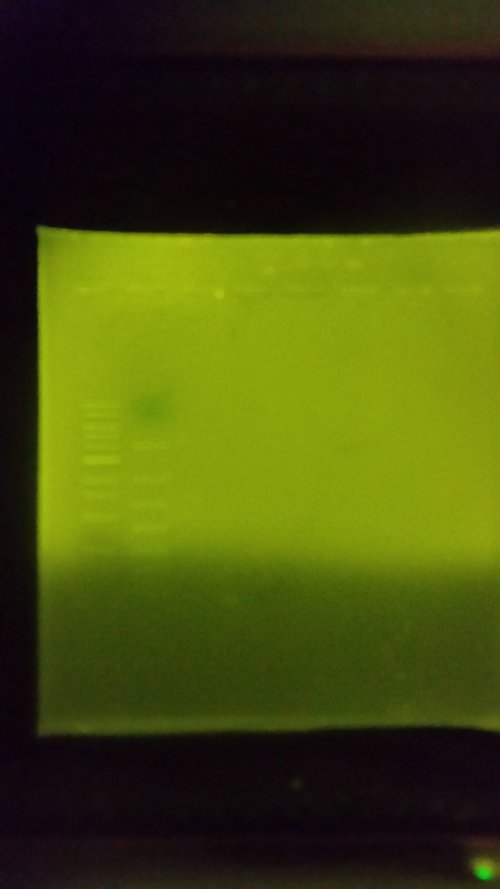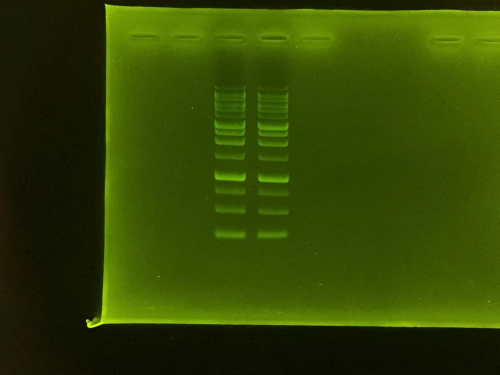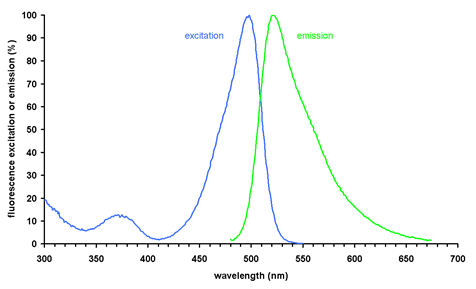This article is a collection of "greatest hits" taken from email conversations between customers and the wonderful technical staff at Benchmark Scientific.
The focal point are questions dealing with the Smart Doc Blue LED gel documentation system and the Smart Glow pre-stain or gel loading dye; all excellent tools for visualizing DNA agarose gels.
We've extracted the essential points and put them together in a FAQ format to make it easy to read through and look for specific topics.
Smart Glow Questions:
Is Smart Glow gel loading dye or pre-stain actually safe?
Both Smart Glow and SYBR safe are considerably safer than EtBr (ethidium bromide). We have conducted AMES mutagenesis testing and also environmental testing similar to SYBR safe and the results show very low mutagenic activity and low toxicity.
How do the Smart Glow products compare to ethidium bromide in terms of sensitivity?
On smaller sized DNA pieces ethidium bromide offers higher sensitivity, but larger ones fluoresce very well with both versions (the loading dye is a little bit less sensitive than the pre-stain).
Because of the risk factors involved with EtBr, our experience has shown most labs are happy to get rid of this hazard, and are satisfied with the level of fluorescence and the ability to detect, cut and image DNA bands.
What are the differences between the Smart Glow Pre-Stain and the Smart Glow Loading Dye?
Generally speaking, the choice is usually a matter of preference. However there are two ways these differ materially.
1. The loading dye is only loaded to the sample, so there is little to no background fluorescence. Just a small amount is loaded at a time, so the gel loading dye usually lasts longer and is more economical.
2. The pre-stain is added to the gel before it is poured so there can be some background fluorescence from the gel. It is also recommended to add the stain to the running buffer. This is recommended because the Smart Glow is positively charged and will migrate in the opposite direction to the DNA in the gel, causing a darker area (absence of stain) at the bottom of the gel. By adding Smart Glow to the buffer, the stain gets "taken up" into the bottom of the gel during the run, keeping the stain consistent through the gel.

An advantage of the pre-stain over the loading dye is that the stain is evenly dispersed through the gel since it is added prior to pouring. This eliminates the possibility of loading volume errors and variations due to pipetting.
Smart Doc Questions:
The images I am getting on my cell phone are not as sharp as the ones in your literature
There are several things to be aware of which will improve the viewing and documenting experience.
1. If your phone has a case (like an Otter Box), you might want to remove it. The camera should be as close to the viewing port as possible. Anything that lifts it away detracts from the quality of the image.
2. Experiment with the removable "neck". The Smart Doc gel viewing hood is made up of two pieces. With the extender in place you get better wide-angle images. Try taking photos with it on and off. If you need to zoom in on a region of interest, do it post production when working with the captured image.
3. If you are getting a lot of background fluorescence, try cutting down the amount you add to the gel. We recommend 2.5ul per 100ml gel solution. It is also suggested to add some of the pre-stain to the running buffer, also 2.5ul per 100ml.
4. The newer the camera, the better. All our testing has been done on iPhone 7 and above. The image below shows the results we get. The whole idea of the Smart Doc was built on the realization that most phones now feature cameras far better than 5 mega-pixel that used to be considered high-end for laboratory work. If your phone is old, your photos will not be as good as ours.

Is the Smart Doc only good for DNA gels, or can I view Protein blots as well?
We have done some testing and found the Smart Doc Blue LED will work with SYBR Ruby dye because the excitation wavelength is the same as SYBR safe.
The unit will not work with transferred protein blots nor with any chemilluminescent tag which needs a CCD camera capable of capturing fainter signals.
If the blot is stained with Coomassie blue, which is a visible stain, the hood portion of the Smart Doc will certainly work on any white light illumination source.
Can I use the Smart Doc with ethidium bromide stains?
Yes. There are two versions of Smart Docs.
The less expensive Gel Doc Hood is simply a dark-room hood that you can place atop your current UV transilluminator (or buy our Accuris E3000 which is a perfect fit!) for viewing EtBr stained gels.
You would need to purchase the 590nm wavelength filter block for the best viewing experience.
The all-in-one Smart Doc with Blue LED lighting is designed for the safe green dyes and comes with the orange filters needed for viewing these dyes.
You would add in the 535nm filter if you wish to view EtBr dyes using the blue LED wavelength light.
I don't want to change from SYBR safe, I see there is a difference in excitation peaks. Does this mean I can't use the Smart Doc?
Although peak excitation for SYBR safe is around 502nm, there is plenty of excitation in the range of the Smart Blue output.
Here is a the excitation/emission spectrum of SYBR safe. We've done extensive testing and are very confident.

What is the largest gel I can view with a Smart Doc gel system?
You can view gels up to 15.2 x 15.2 cm.
A laboratory supplier should be much more than a vending machine. You need a partner who understands the products they sell.
The Stellar Scientific team invests dozens of hours with each manufacturer to provide our customers with accurate information so they can make the best decisions and get the best performance from their products.


